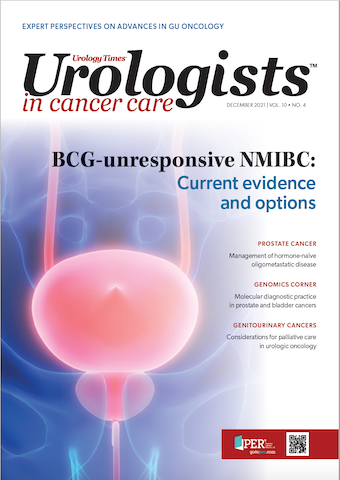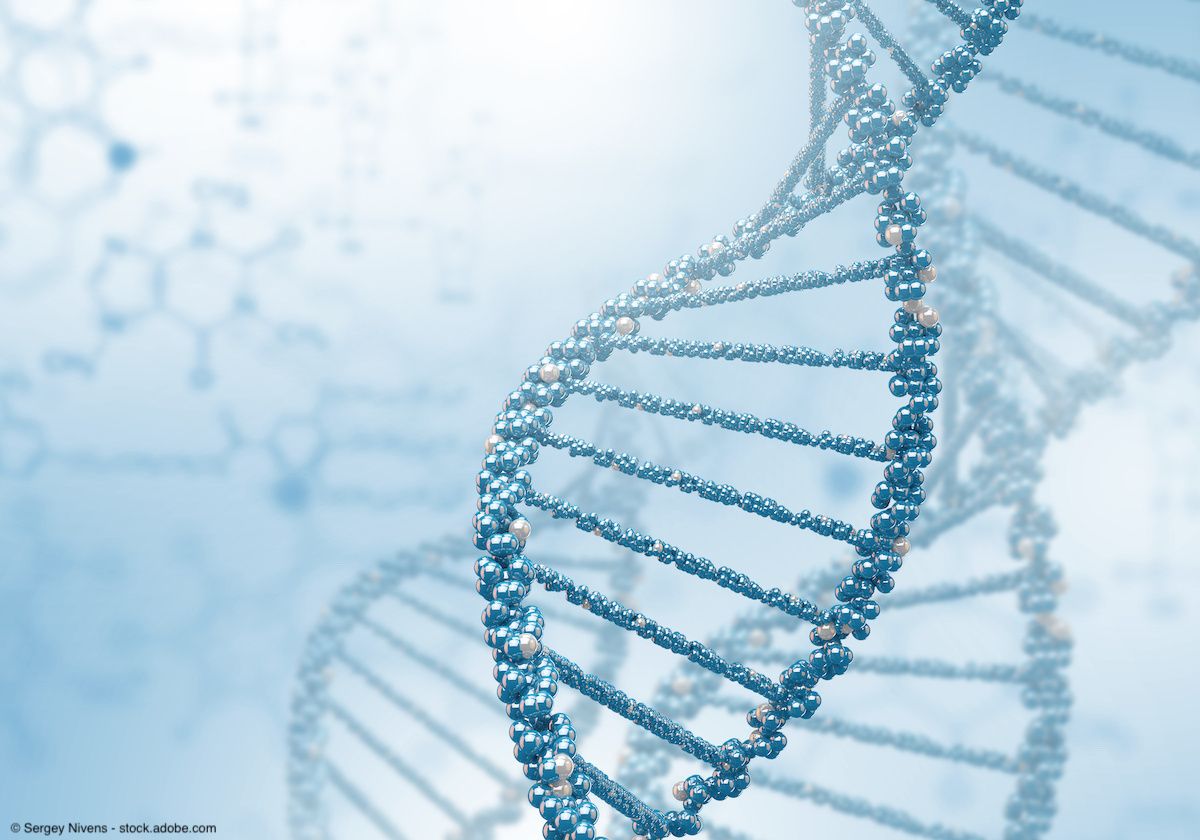Publication
Article
Urology Times Urologists in Cancer Care
Molecular diagnostic practice in prostate and bladder cancers
Author(s):
"Liquid biopsy analysis provides a noninvasive and facile tool for early detection, diagnosis, and recurrence surveillance of urological cancer," writes Jim Lu, MD, PhD.
Jim Lu, MD, PhD

Cancers are the most common urological malignancies. The annual incidence of prostate cancer is more than 200,000 cases and prostate cancer contributes to over 30,000 deaths yearly in the United States.1 Bladder cancer is the second most common malignancy from the urogenital system and the sixth most common among all cancer types.2 Thanks to advances in diagnostics, clinical staging, and therapeutic interventions in the past decades, the prognoses of prostate and bladder cancer have been substantially improved with 5-year survival rates of 97.5% and 77.1%, respectively.2,3
However, better prognosis relies heavily on early diagnosis. In prostate cancer, over 70% of patients with 5-year survival have localized disease whereas the 5-year survival rates for patients with regional spread and distant metastasis are dramatically reduced to 13% and 7%, respectively.3 Similar survival statistics have been observed in patients with bladder cancer. Over 80% of patients with 5-year survival are carcinoma in situ or localized cancer, and less than 10% of patients with 5-year survival are with the diseases of regional spread and distant metastasis.2 These statistics highlight the importance of early detection and improved therapeutic intervention for patients with late-stage cancer. Molecular medicine fits neatly into the need to confront these challenges and provides technological tools for early diagnosis and effective therapeutic strategies.
Molecular genetic approaches in molecular medicine
Polymerase chain reaction (PCR). PCR is an enzyme-driven, primer-mediated (forward and reverse primer), temperature-dependent process for replicating a specific DNA sequence in vitro. Each PCR cycle doubles the quantity of a specific DNA sequence based on the repetitive cycling of 3 simple reactions of amplification: denaturing 2 strands of DNA, annealing primers to individual DNA template strands, and extension of primers via DNA polymerase to synthesize the complementary strand. Each copy of DNA then serves as another template for further amplification.
The discovery of PCR technology greatly facilitated and revolutionized molecular diagnostics, shortening the process of identifying a known mutation from months to a single day. Prior to PCR, analysis of genetic alterations (mutations, genomic deletions/amplifications, translocations/gene fusion) in human disease had been performed using in vitro DNA cloning combined with Sanger DNA sequencing and fluorescence in situ hybridization. This involved complicated, time-consuming laboratory processes, and the application of this technology in clinical practice was very limited. With the advent of PCR, molecular diagnostics quickly became routine practice in the clinical laboratory for the provision of genetic services, such as carrier or population screening for known mutations, prenatal diagnosis of inherited diseases, or, in recent years, analysis of unknown mutations in cancer tissues and liquid biopsies.
Sanger DNA sequencing. Sanger sequencing determines the sequence of nucleotide bases in a segment of DNA (commonly < 1000 bp in length) and with 99.99% base accuracy is considered the gold standard for determining and validating DNA sequences. The Sanger method combines sequence extension and amplification, random termination using fluorescently labeled nucleotides, and gel electrophoresis to determine the precise nucleotide sequence of DNA. Today, the combination of Sanger sequencing and PCR has become routine practice in the clinical molecular diagnostics laboratory. The technique is commonly applied to detecting known or unknown mutations in targeted genomic segments for analysis of inheritable genetic diseases, hereditary cancer syndromes, solid tumor tissues, and other human disorders.
Quantitative real-time PCR. Quantitative PCR (qPCR) technology allows semi-quantification of DNA fragments generated across PCR amplification cycles in a real-time fashion. Two methods predominate, with probe-based qPCR generally achieving better performance in assay specificity than SYBR Green-based qPCR due to the highly specific hybridization of the probe to the targeted templates. Both use the accumulation of fluorescent signal as a proxy for DNA content. Today, real-time qPCR technology is widely used for detecting DNA/RNA copy number changes such as genomic amplification, DNA methylation analysis such as MLH1 hypermethylation, and other genetic alterations such as DNA mutations.
Droplet Digital PCR. Droplet Digital PCR (ddPCR) is a method for performing PCR that is based on water-oil emulsion droplet technology. Although conventional PCR amplifies all DNA/RNA templates from a given sample in 1 reaction tube, ddPCR fractionates the templates from a sample into thousands of droplets with 1 droplet theoretically containing 1 copy of the template, and PCR amplification of the template molecules occurs in each individual droplet. ddPCR technology uses reagents and workflows like those used for most standard qPCR assays.
Although real-time qPCR can measure the tested targets only semi-quantitatively, ddPCR provides absolute qualification of biological targets in a tested sample and is the only PCR-based technology that can do so. The technology is highly sensitive. With 3 ng of input DNA (approximately 1000 copies of human genome), analytical sensitivity can reach 0.1% and increases accordingly with increased input DNA.
Due to its high sensitivity and capacity to detect subtle changes in copy number, ddPCR technology is widely applied to analyze DNA/RNA copy number alterations where the changes are only a few folds’ difference, and rare DNA sequences in samples such as liquid biopsy where rare mutant sequences are present in a background of many wild-type sequences. With the growing need for detecting DNA mutations and other genetic alterations in liquid biopsy specimens in oncology, ddPCR will likely become a commonly adopted technology in clinical molecular diagnostic laboratories.
Next-generation sequencing technology. Next-generation sequencing (NGS) is a massively parallel sequencing technology that offers ultrahigh throughput, scalability, and speed for DNA and RNA sequencing. Over the past decade, the technology has revolutionized clinical practice in molecular medicine, allowing labs to perform a variety of molecular analysis at a level never thought possible.
Unlike Sanger DNA sequencing technique, which analyzes only a single DNA fragment from 1 sample per sequencing reaction, NGS technology can analyze thousands to millions of sequences at once, allowing the interrogation of DNA sequence variants/mutations from whole genomes from many samples in 1 sequencing run at the same time. The processes consist of 4 major steps: DNA fragmentation and target capture/amplification, library preparation, sequencing, and bioinformatic analysis and data interpretation.
The extremely high sequencing capacity of NGS combined with in silico bioinformatic analysis allows the detection of almost all varieties of genetic changes including DNA copy number changes, point mutations, gene translocations, and fusions. Nowadays, NGS technology has become a routine tool in clinical molecular laboratories for the analysis of hereditary cancer syndromes, solid tumors, hematological malignancies, and liquid biopsies for patients with cancers.
Germline genetic testing for urological cancers
The pathogenesis of urological cancers is multifactorial. Although most urological cancers are caused by nonhereditary factors such as chemical stimulation (smoking), hormone dysregulation, and other environmental factors, accumulating evidence from genetic studies has demonstrated a consistent impact of heritable gene variants and family history on the development of the disease. Individuals who carry inherited genetic defects have a substantially increased risk for developing certain types of cancers. It is estimated that about 5% of localized disease and 11% to 16% of metastatic disease in prostate cancer is caused by germline pathogenic mutations in genes responsible for DNA damage repair.4,5 In bladder cancer, a recent study analyzed pathogenic variants from germline genetic testing in more than 1000 individuals with high familial cancer risk and found that about 24% of the tested individuals carry inheritable germline pathogenic variants in genes for DNA damage response pathways.6 Thanks to extensive efforts in genetic linkage mapping, gene cloning, and sequencing in the past few decades, studies have identified a handful of genes conferring risk for prostate and bladder cancers. Germline pathogenic variants in DNA damage repair genes (the double-strand break genes BRCA1, BRCA2, ATM, ATR, NBN, CHEK2, FANCA, PALB2, and RAD51D, and the mismatch repair genes MLH1, MSH2, MSH6, PMS2, and EPCAM) have been shown to be associated with increased risk for prostate and bladder cancers. In addition, germline variants of the HOXB13 gene, a member of the homeobox (HOX) gene family, have been shown to be strongly associated with the risk of prostate cancer. Genetic testing of germline variants of these genes in families with a history of clustered prostate and bladder cancers can identify individuals who carry disease-causing genetic variants and are at high risk for disease. Active surveillance and follow-up for individuals carrying disease-causing variants can also facilitate early diagnosis and early clinical intervention and further reduce morbidity associated with prostate and bladder cancers.
Standard testing for hereditary cancer syndromes is NGS analysis combined with Sanger sequencing confirmation of detected disease-causing pathogenic variants.
Genetic testing of somatic alterations in tumor tissues in prostate and bladder cancers
Contrary to the germline genetic alterations that are inherent and are present in all cells in the body, somatic genetic alterations occur in tumor cells during the initiation and progression of cancers and are present only in tumor cells. Analysis of somatic genetic changes provides therapeutic guidance for targeted therapy of cancer patients. With continued progress of therapeutic regimens, targeted therapy has become an effective therapeutic option for prostate and bladder cancers. For bladder cancer, 3 molecular targets have been FDA approved. Bladder cancers with mutations and amplification of tyrosine kinase receptors FGFR2 and FGFR3 are sensitive to tyrosine kinase inhibitor erdafitinib and fusion of another tyrosine kinase receptor family NTRK1, NTRK2, and NTRK2 render sensitivity to entrectinib and larotrectinib.7 In addition, bladder cancer cells with high microsatellite instability and tumor mutation burden are responsive to PD-1 inhibitor pembrolizumab (Keytruda).7 In prostate cancer, multiple PARP inhibitors have been approved for treatment of prostate cancer with germline or somatic inactivation of genes in DNA damage repair pathway, including BRCA1, BRCA2, ATM, CHEK2, BARD1, PALB2, and CHEK12.8 Genetic testing of these molecular targets will facilitate the choice of more effective therapeutic strategy in the clinical treatment of patients with prostate and bladder cancers.
Detection of somatic alterations in liquid biopsy
Currently, a combination of needle biopsy, cytology, and cystoscopy is the routine methodology for diagnosis, prognosis, and disease surveillance in prostate and bladder cancers. However, poor sensitivity, high invasiveness, and large variations in tumor stage and grade interpretation emphasize the urgent need for improvements in clinical guidance for these common urological malignancies. Liquid biopsy represents a new noninvasive approach that has been extensively studied over the last decade, and several candidate biomarkers show great promise. These include circulating tumor cells in blood and cell-free DNA and RNA in plasma and urine. Analysis of liquid biopsies provides 2 clear advantages over the solid tumor analysis. First, liquid biopsy analysis provides a noninvasive and facile tool for early detection, diagnosis, and recurrence surveillance of urological cancer. Many studies have demonstrated the clinical utility of circulating tumor DNA and RNA analysis in liquid biopsies in detecting common urological malignancies with high sensitivity and specificity.9 Using NGS analysis, a recent study showed that mutations of some of the most commonly mutated genes—TP53, KRAS, PIK3CA, BRAF, CTNNB1, and FGFR3—could be detected in plasma or urine and were associated with early recurrence of bladder cancer, achieving a sensitivity of 83% and specificity of 100%. Second, liquid biopsies are essential specimens in patients with late-stage unresectable tumors where tissue specimens are unavailable. Although there remain hurdles for clinical application of liquid biopsy analysis, it is only a matter of time before liquid biopsy replaces tissue biopsy in all solid tumors.
Jim Lu, MD, PhD, is a board-certified anatomic pathologist and medical director of GoPath Laboratories LLC and GoPath Pathology Associates S.C., Buffalo Grove, Illinois.
References
1. Rawla P. Epidemiology of prostate cancer. World J Oncol. 2019;10(2):63-89. doi:10.14740/wjon1191
2. Cancer stat facts: bladder cancer. National Cancer Institute. Accessed November 15, 2021. https://seer.cancer.gov/statfacts/html/urinb.html
3. Cancer stat facts: prostate cancer. National Cancer Institute. Accessed November 15, 2021. https://seer.cancer.gov/statfacts/html/prost.html
4. Cheng HH, Sokolova AO, Schaeffer EM, Small EJ, Higano CS. Germline and somatic mutations in prostate cancer for the clinician. J Natl Compr Canc Netw. 2019;17(5):515-521. doi:10.6004/jnccn.2019.7307
5. Cancel-Tassin G, Cussenot O. Genetic susceptibility to prostate cancer. BJU Int. 2005;96(9):1380-1385. doi:10.1111/j.1464-410X.2005.05836.x
6. Nassar AH, Abou Alaiwi S, AlDubayan SH, et al. Prevalence of pathogenic germline cancer risk variants in high-risk urothelial carcinoma. Genet Med. 2020;22(4):709-718. doi:10.1038/s41436-019-0720-x
7. Drugs approved for bladder cancer. National Cancer Institute. Updated April 26, 2021. Accessed November 15, 2021. https://www.cancer.gov/about-cancer/treatment/drugs/bladder
8. Drugs approved for prostate cancer. National Cancer Institute. Updated January 14, 2021. Accessed November 15, 2021. https://www.cancer.gov/about-cancer/treatment/drugs/prostate
9. Todenhöfer T, Struss WJ, Seiler R, Wyatt AW, Black PC. Liquid biopsy-analysis of circulating tumor DNA (ctDNA) in bladder cancer. Bladder Cancer. 2018;4(1):19-29. doi:10.3233/BLC-170140
Newsletter
Stay current with the latest urology news and practice-changing insights — sign up now for the essential updates every urologist needs.





















